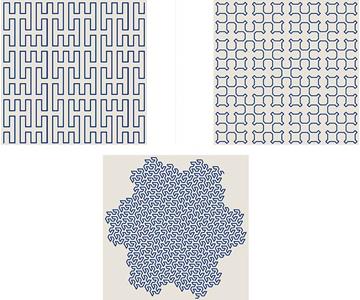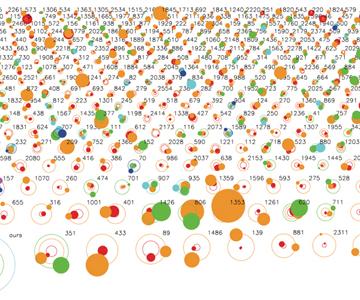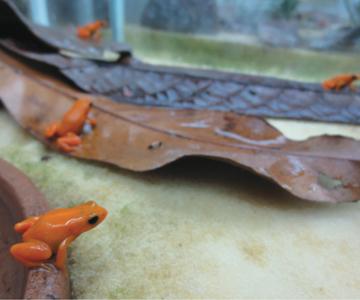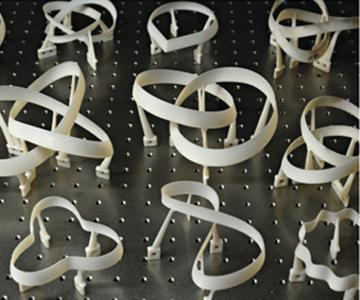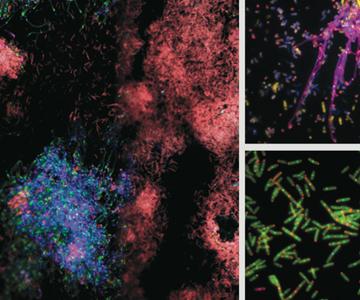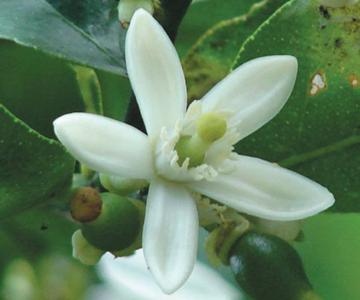Magazine
May-June 2013
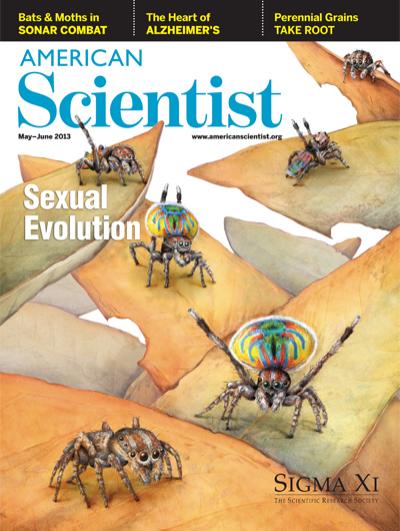
May-June 2013
Volume: 101 Number: 3
The peacock spider (Maratus volans) is a tiny jumping spider native to eastern Australia, deriving its name from the brightly colored flaps on the male’s abdomen that it extends in a fan-like shape during courtship. The full courtship dance, which also includes waving his third pair of furry, striped legs, can be viewed in a popular nature video on YouTube: http://youtu.be/9GgAbyYDFeg. Many extreme structures in the living world are attributed to sexual selection and sexual reproduction. Divergence of structures toward extremes and the rise of new species can be detected by studying areas of the genome that are rapidly evolving. Not only are visible features, such as the peacock spider’s fan, subject to past or present rapid evolution, the process also affects the proteins that moderate sperm–egg interactions. In “Rapid Evolution in Eggs and Sperm” (pages 210–217), Katrina Claw compares and contrasts sperm and egg morphology and biochemistry across the tree of life, and explains why and how this diversity evolved. (Cover illustration by Emma Skurnick.)
In This Issue
- Agriculture
- Art
- Astronomy
- Biology
- Computer
- Engineering
- Environment
- Ethics
- Evolution
- Mathematics
- Medicine
- Physics
- Technology
Rapid Evolution in Eggs and Sperm
Katrina G. Claw
Evolution
Sperm and eggs are ubiquitous and diverse. What drives them to diverge?
An Acoustic Arms Race
William E. Conner
Evolution Physics
Bats and other animals use sound as a hunting tool--but their prey has also evolved ways to thwart detection.
Wild Plants to the Rescue
David Van Tassel, Lee DeHaan
Agriculture Biology
Breeding perennial grains could improve food security and soil health.
Scientists' Nightstand
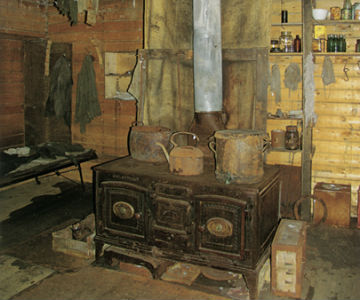
Two Antarctic Tales
David Schoonmaker
Environment Review Scientists Nightstand
A brief review of Antarctica: An Intimate Portrait of a Mysterious Continent, by Gabrielle Walker, and Secrets of the Ice: Antarctica’s Clues to Climate, the Universe, and the Limits of Life, by Veronica Meduna

The Sharpest Eye in the Sky
Fenella Saunders
Astronomy Review Scientists Nightstand
A brief review of Hubble's Universe: Greatest Discoveries and Latest Images, by Terence Dickinson
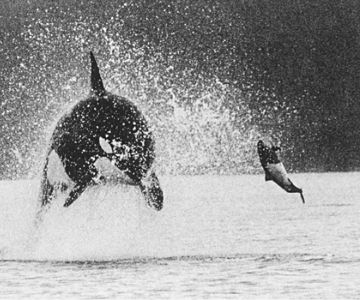
A Life with Whales
Hallie Sessoms
Biology Environment Nature Conservation Review Scientists Nightstand
A brief review of Into Great Silence: A Memoir of Discovery and Loss among Vanishing Orcas, by Eva Saulitis

Editors' Note: Scientists' Nightstand
The Editors
Communications Scientists Nightstand
This issue marks the debut of our new, brief and occasional books section


